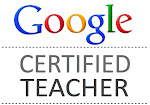This was originally published on SmartBlogs. I'm hoping that parents will read this article and have a good understanding about the benefits of blogging as we begin a new school year on Wednesday.

I have been an elementary-school teacher for more than 25 years and I
am always on the lookout for meaningful ways to engage and motivate my
young students. I started
Mrs. Yollis’ Classroom Blog
in 2008 with the idea of sharing class activities with parents. Over
time, the blog has grown to be the centerpiece of our third-grade
classroom. It has become a true global learning community that offers
myriad rewards for students, parents and teachers.
Develop quality literacy skills
When I first started blogging, I thought the posts would be the
primary focus of the blog. I quickly realized that the comment section
was where the blog came to life. As a class,
we set high standards and expectations for writing, agreed to always have an adult proofread before publishing, and
created a video to help teach commenting skills.
My students are highly motivated by their
authentic global audience
and take great pride in producing top-notch writing for their readers.
It has been a pleasure to watch my third-graders develop into writers
who are eager to compose quality comments on one of our five classroom
laptops.
What has been even more exciting for me is the student participation
from home. Although I rarely require a comment, students frequently
choose to comment on either our class blog or our class
photo-of-the-day project during their free time. Clearly, my students enjoy contributing to our online learning community.
Include parents in the learning
Parental involvement has strengthened and expanded the learning opportunities for my class. Twice a year, I run what I call
Family Blogging Month.
It is a great way to formally invite parents to join in the classroom
learning via the blog. The family comments are always valued, and during
FBM, I highlight several family exchanges on the blog in the hopes of
encouraging more parents and family members to comment. Here are two
posts that feature rewarding family contributions:
More Quality Comments: Family Blogging Month! and
Family Blogging: When I Was Young…
Many parents work but would love to volunteer in some way. Last year,
I asked parents to become “virtual volunteers” for our blogs. A virtual
volunteer is a person who supports the blog by commenting back to
students. This type of interaction helps strengthen the home-school
connection and makes the comment sections more engaging.
Integrate curriculum in creative ways
With classroom time at a premium, I look for
meaningful ways to integrate curriculum; the blog has been the perfect
venue. When my class read “The Great Kapok Tree” by Lynne Cherry for
language arts, the students followed up their reading by researching a
rain forest animal that was mentioned in the story.
Each student composed a comment
for the blog from the point of view of that animal. It was a wonderful
mix of reading, researching, science and creative writing! During our
biography unit, I had each student select a famous person to study.
Students submitted a creative comment
pretending they were that person. George Washington got a comment from
Queen Elizabeth I, Mozart and Tchaikovsky were chatting; the blog
comments truly brought these historic people to life! See more
examples of integrated curriculum.
Build a digital footprint
I believe it is important to teach young children how to be
contributing members of an online community. Building a positive digital
footprint and practicing Internet safety are not simply one-week units
of study, but are regularly taught and practiced via the class blog.
Connect with other learners
Of all the riches that blogging has brought to my class, the
relationships we’ve built with other classrooms around the world have
been the most rewarding. The collaborative projects we have joined not
only support the educational standards required at my grade level but
have also given my students a real understanding of other topics such as
geography, time zones, cultures and friendships. I recently presented
four global projects at
ISTE with my blogging colleague,
Kathleen Morris from Australia. Although we have collaborated for many years, we met for the first time when we shared
Flattening Classroom Walls with Blogging and Global Collaboration in San Diego.
Blogging offers many rewards!
What excites you about blogging?






























